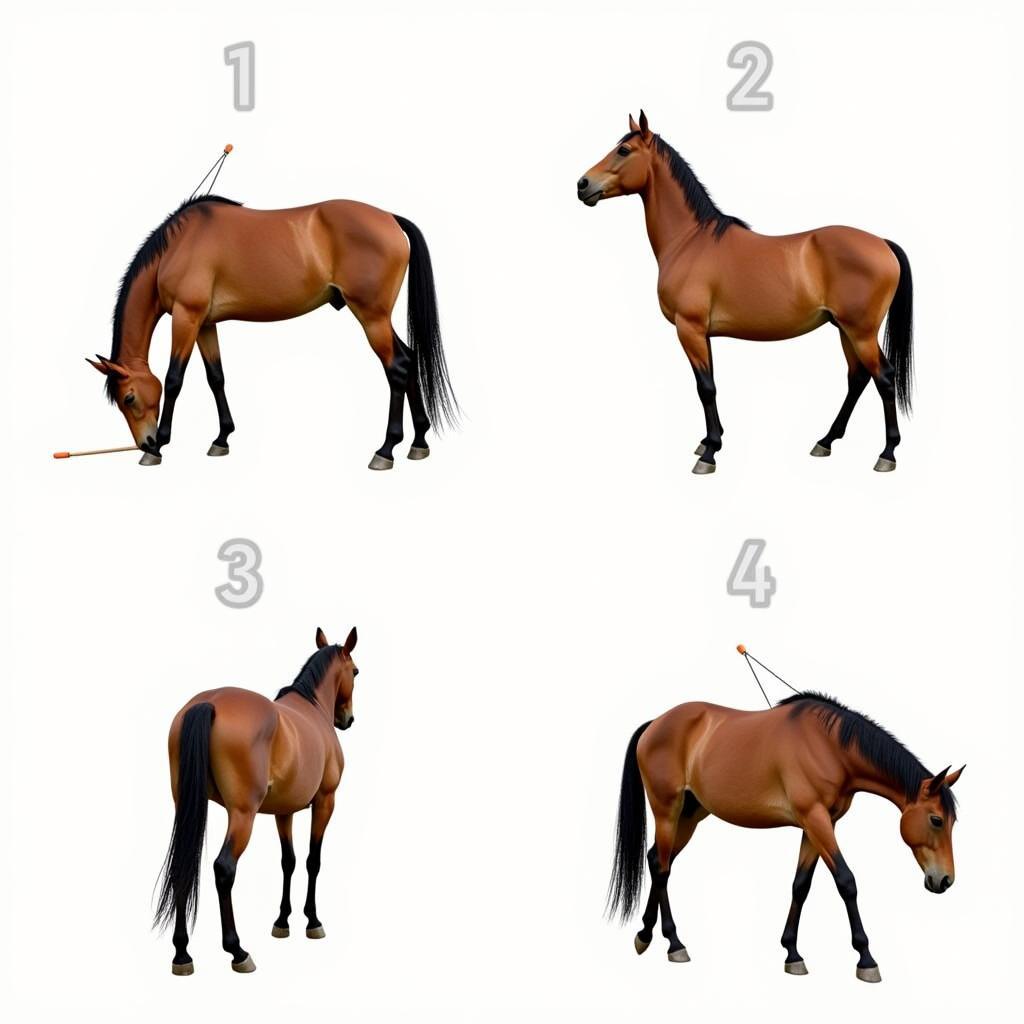The carrot stick, a simple yet powerful tool, has become a staple in horse training. From groundwork to riding, the carrot stick can help refine communication between horse and rider, creating a more harmonious and effective partnership. This article delves into the nuances of using a carrot stick for horse training, covering everything from choosing the right stick to advanced techniques. We’ll explore how this versatile tool can enhance your training and build a stronger bond with your equine companion.
Choosing the Right Carrot Stick and Understanding Its Purpose
Before diving into techniques, selecting the appropriate carrot stick is crucial. They come in various lengths and materials, and understanding these differences is important. A shorter stick is ideal for groundwork and close-range work, while a longer one is useful for lunging and riding. Flexibility is also a factor. A slightly flexible stick offers more nuanced cues, whereas a rigid one provides clearer, more direct signals. The purpose of the carrot stick isn’t to punish, but to extend your arm’s reach, providing clear and consistent signals that refine your horse’s responses. It’s about clarifying your aids and improving communication, not inflicting pain or discomfort.
Basic Carrot Stick Techniques for Groundwork
 Carrot Stick Techniques for Groundwork
Carrot Stick Techniques for Groundwork
Groundwork is the foundation of any successful training program, and the carrot stick can be a valuable tool in this phase. It can be used to encourage forward movement, lateral work, and backing up. For example, a gentle tap on the hindquarters can encourage the horse to move forward, while a light touch on the shoulder can cue a turn. Remember to always pair the carrot stick cue with a verbal cue, creating a consistent and predictable language for your horse. Horses thrive on consistency, and using the carrot stick in conjunction with verbal cues creates a clear communication system. For more information on related horse training, check out our article on r+ horse training.
Advanced Carrot Stick Techniques: Refining Riding Skills
The carrot stick extends its utility to ridden work. It can be used to refine aids for lateral movements, transitions, and collection. For instance, a light touch behind the girth can encourage engagement of the hindquarters, while a gentle tap on the shoulder can refine a turn on the forehand. Remember, subtlety is key. The carrot stick should be used as an extension of your leg and rein aids, not a replacement. It’s about refining communication, not overriding it. What are the benefits of using a carrot stick for riding? It allows for more precise cues, leading to a more responsive and refined ride.
Common Misconceptions and Mistakes to Avoid
A common misconception is that the carrot stick is a punishment tool. This is absolutely incorrect. The carrot stick should never be used to inflict pain. Instead, it’s a tool for clear communication, extending your reach and refining your aids. Overuse or misuse can lead to confusion and anxiety in the horse. Start with light pressure and gradually increase it only if necessary. Avoid using the carrot stick in a jarring or unpredictable manner. Consistency and clarity are key to effective communication. Remember to celebrate even the smallest successes, making the training experience positive and rewarding for both you and your horse. Speaking of treats, do you know can horses eat cranberries?
Building a Stronger Bond Through Positive Reinforcement
Integrating positive reinforcement, such as treats or verbal praise, with carrot stick training is crucial. Rewarding desired behaviors reinforces the connection between the cue and the response, making the learning process more efficient and enjoyable for the horse. This also fosters trust and strengthens the bond between horse and rider. Positive reinforcement transforms training into a collaborative effort, building a foundation of mutual respect and understanding. Wondering about other treats? Find out can horses eat asparagus. Looking for a fun treat for your horse’s birthday? Check out happy birthday cake horse.
In conclusion, the carrot stick, when used correctly, can be a valuable asset in your horse training toolkit. From groundwork to riding, it can refine communication, enhance responsiveness, and build a stronger bond with your equine partner. Remember, patience, consistency, and positive reinforcement are key to success. By mastering the art of the carrot stick, you can unlock new levels of communication and partnership with your horse. Do you know can horses eat almonds?
FAQ
- What is the ideal length for a carrot stick?
- How do I introduce the carrot stick to my horse?
- Can the carrot stick be used on all breeds of horses?
- What are the common mistakes to avoid when using a carrot stick?
- How can I combine the carrot stick with other training aids?
- Is the carrot stick suitable for young horses?
- Where can I purchase a quality carrot stick?
When you need help, please contact us by Phone: 0772127271, Email: [email protected] Or visit us at: QGM2+WX2, Vị Trung, Vị Thuỷ, Hậu Giang, Việt Nam. We have a 24/7 customer service team.